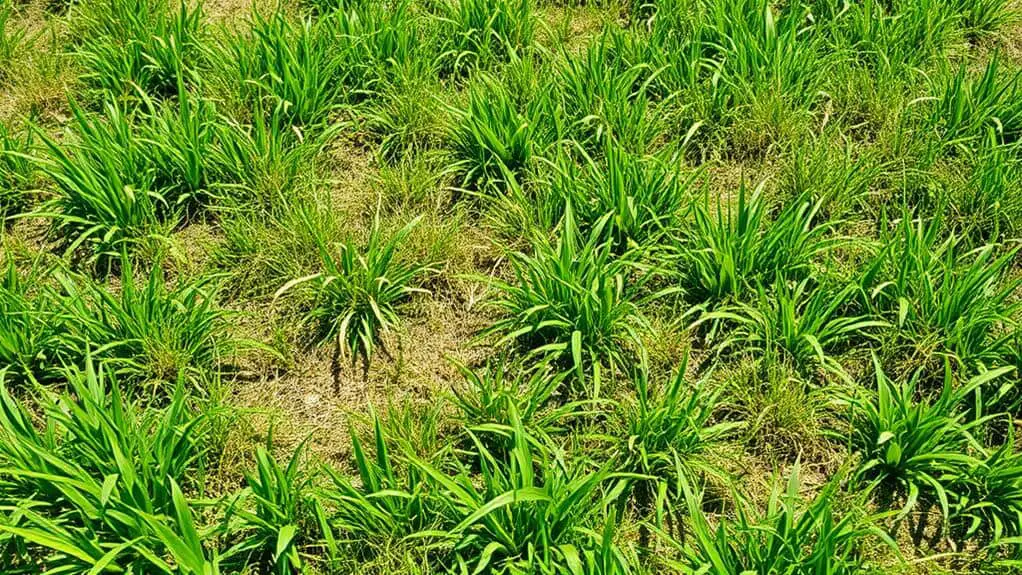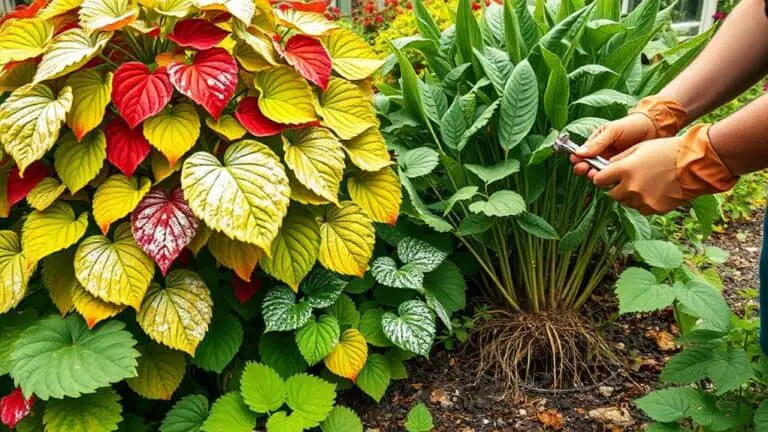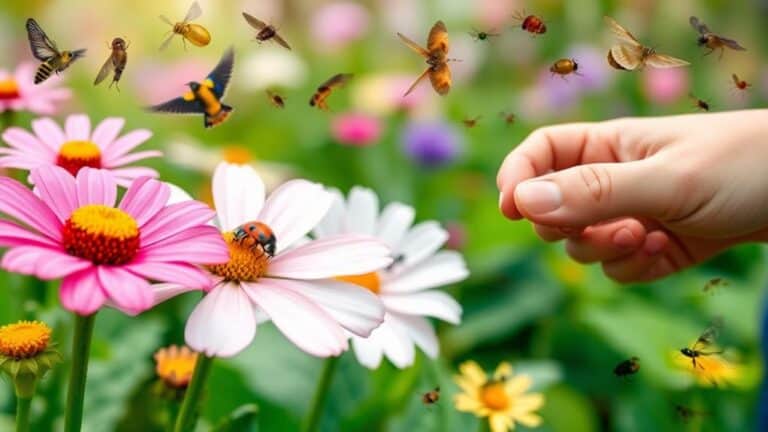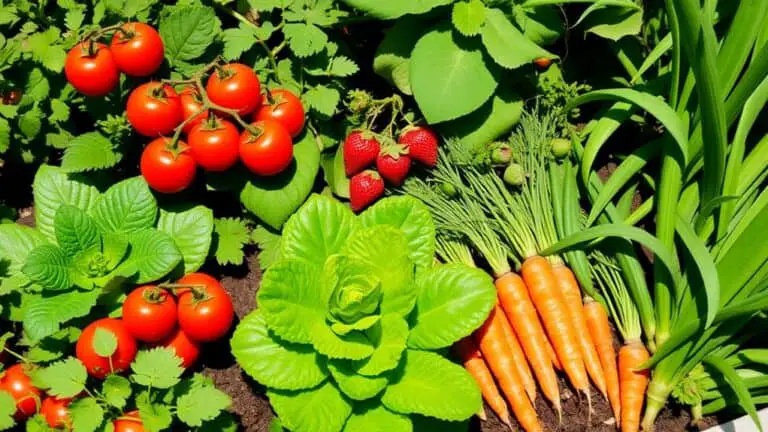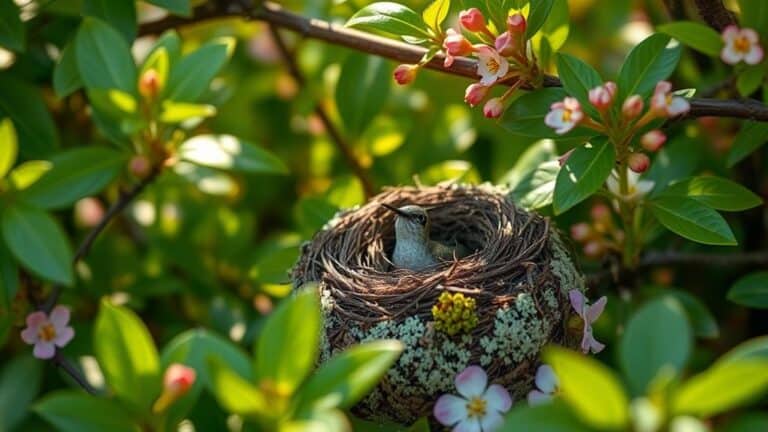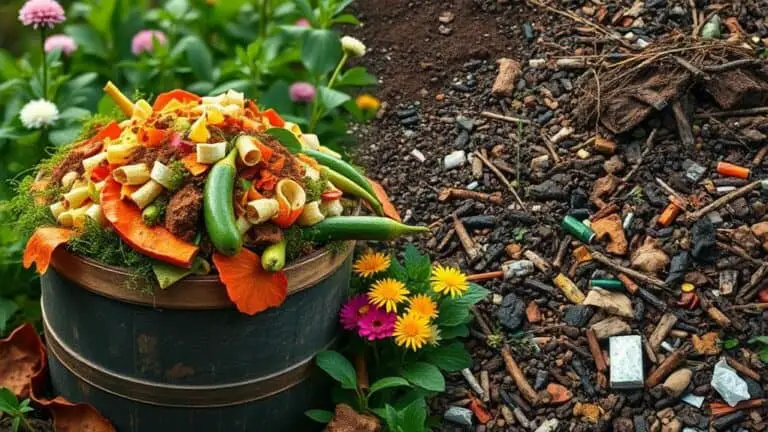Types Of Grass To Avoid Growing In Summer
When summer rolls around, choosing the right type of grass for your lawn can make all the difference in maintenance and appearance. You might be tempted by the lush look of Kentucky Bluegrass or the quick growth of Perennial Ryegrass, but these cool-season varieties often struggle in the heat. They can turn brown and require constant watering just to survive. The same goes for Creeping Bentgrass and Tall Fescue, which also have their own set of limitations when temperatures rise. Want to know which grasses can actually thrive in the summer heat and save you time and effort?
Kentucky Bluegrass Issues

When summer rolls around, Kentucky bluegrass often faces significant issues that can turn your lawn into a patchy, brown mess.
This cool-season grass struggles in high temperatures, especially when it climbs above 80°F. You might notice it turning brown or even going dormant. Kentucky bluegrass isn't very drought tolerant, so it needs at least an inch of water each week to stay healthy.
High humidity and heat can also lead to fungal infections, making it even less resilient. Its ideal growth occurs in cooler weather, between 60°F and 75°F, which is why it performs poorly in the summer.
If you live in a hot region, consider frequent overseeding with warm-season grasses to keep your lawn looking green.
Perennial Ryegrass Weaknesses
Although perennial ryegrass establishes quickly and provides a lush green lawn, it has several weaknesses that make it unsuitable for summer months.
This cool-season grass struggles in high temperatures and often turns brown or goes dormant when heat-stressed. Its shallow root system means it lacks drought resistance and dries out easily in prolonged heat.
To keep it green, you'll need to water frequently, which can lead to overwatering problems.
- Prone to disease in humid conditions
- Requires frequent watering in summer
- Turns brown or goes dormant in high heat
- Shallow roots make it less drought-resistant
Considering these factors, it's clear that perennial ryegrass isn't the best choice for summer.
Instead, look into warm-season grasses that thrive in hot weather.
Tall Fescue Limitations

Tall fescue, a popular choice for many lawns, can face significant challenges during the scorching summer months. When temperatures soar above 90°F, tall fescue often struggles. It can turn brown and go dormant, which isn't ideal for maintaining a lush green lawn.
Even though tall fescue has deep roots that help with drought resistance, it still needs consistent watering in a hot summer to stay healthy. In direct sunlight, it can experience stress and heat-related diseases, as it prefers partial shade.
Additionally, its growth rate slows during peak summer, making it less competitive against warm-season grasses. In southern climates, where heat is intense, tall fescue's performance can be particularly hindered.
Creeping Bentgrass Problems
Let's talk about Creeping Bentgrass and why it mightn't be the best choice for your summer lawn.
This grass struggles when temperatures rise above 80°F, leading to browning and dormancy.
Plus, it needs a lot of water and care, making it high maintenance during the hot summer months.
Poor Heat Tolerance
Creeping bentgrass often struggles in the heat of summer, making it a poor choice for regions with high temperatures. As a cool-season grass, it faces several challenges when the mercury rises.
- Heat Stress: It often shows signs of heat stress, like browning.
- Moisture Needs: It requires consistently moist conditions, which means lots of watering.
- Disease Susceptibility: It's prone to diseases like dollar spot and brown patch in warm, humid conditions.
- Shallow Roots: Its shallow root system makes it less drought-resistant.
Because of its poor heat tolerance, creeping bentgrass can be a headache to maintain during hot summers.
If you live in a warm climate, you might want to evaluate other grass types that thrive better in the heat.
High Maintenance Requirements
In addition to its poor heat tolerance, you'll find that maintaining creeping bentgrass during summer can be a cumbersome task.
This grass type demands constant moisture and frequent mowing, making it high maintenance in the summer heat. The shallow roots mean it's less drought-tolerant, so it needs consistent watering—quite a challenge in hot climates.
Creeping bentgrass is also prone to disease in hot, humid conditions, leading to more management efforts to keep it healthy. When temperatures soar above 80°F, it often browns and goes dormant.
You'll also need specialized fertilizers and pest control, which adds to the complexity and cost. Overall, keeping creeping bentgrass healthy during summer can be quite an ordeal.
Fine Fescue Drawbacks

When it comes to fine fescue grasses, including creeping red fescue and chewing fescue, there's no denying their struggle in direct sunlight and high temperatures.
Summer growth for these grasses can be quite challenging due to several key drawbacks:
- Shallow root systems: These grasses often suffer from drought stress during hot summer months.
- Temperature sensitivity: Fine fescues tend to turn brown and enter dormancy when temperatures exceed 80°F.
- Moisture needs: They require consistent moisture and cooler environments, which is hard to maintain in summer heat.
- Weed competition: Fine fescues are prone to competition from weeds and warm-season grasses.
Understanding these challenges can help you make better choices for your lawn, ensuring it stays green and healthy all summer long.
Annual Ryegrass Concerns
When considering grass types for summer, annual ryegrass raises several concerns.
Its rapid growth can outcompete native plants, reducing the biodiversity in your lawn.
Additionally, it's a common allergy trigger, making it a less ideal choice for families and pets.
Rapid Growth Issues
Annual ryegrass's rapid growth can be a real headache in summer. It quickly outcompetes native plants, which can harm the biodiversity in your yard.
This rapid growth also means increased maintenance efforts, as it needs more frequent mowing and watering to keep it under control. During dry summer months, its need for consistent moisture can be challenging.
Here are some key issues to reflect upon:
- Competes with native plants: It can dominate other grasses.
- Needs frequent mowing: Its rapid growth requires regular cutting.
- High water demand: It needs more water, especially in dry periods.
- Seeding quickly: It can spread uncontrollably if not managed.
Allergy Trigger Potential
Often overlooked, the allergy-trigger potential of annual ryegrass can be quite significant, especially for those sensitive to pollen.
This grass produces a lot of pollen during its flowering period in late spring to early summer. Its cool-season nature means it can continue to thrive in warmer months, prolonging the pollen season and causing more allergy symptoms.
If you're allergic to ryegrass, you might experience sneezing, nasal congestion, itchy eyes, and even skin rashes.
Managing this grass by regularly mowing before it flowers can help, but it's essential to evaluate alternatives if allergies are a major concern.
Grass seeds from other types might be a better choice to avoid these issues and enjoy your garden more.
Native Plant Competition
The encroachment of annual ryegrass presents a significant threat to native plant populations. This fast-growing grass can quickly outcompete native species, leading to reduced biodiversity in local ecosystems.
Its aggressive spread often leads to monocultures, displacing essential native plants necessary for local wildlife and soil health.
Consider these key points:
- Rapid growth: Annual ryegrass grows quickly and can overshadow slower-growing native species.
- Monocultures: Its dominance can create areas where only ryegrass thrives, harming biodiversity.
- Allergy risks: This grass can trigger allergies, making it problematic in residential areas.
- Disturbed soils: It thrives in disturbed soils, making it tough for native plants to re-establish.
Effective management and careful monitoring are vital to prevent annual ryegrass from dominating your garden.
Rough Bluegrass Struggles
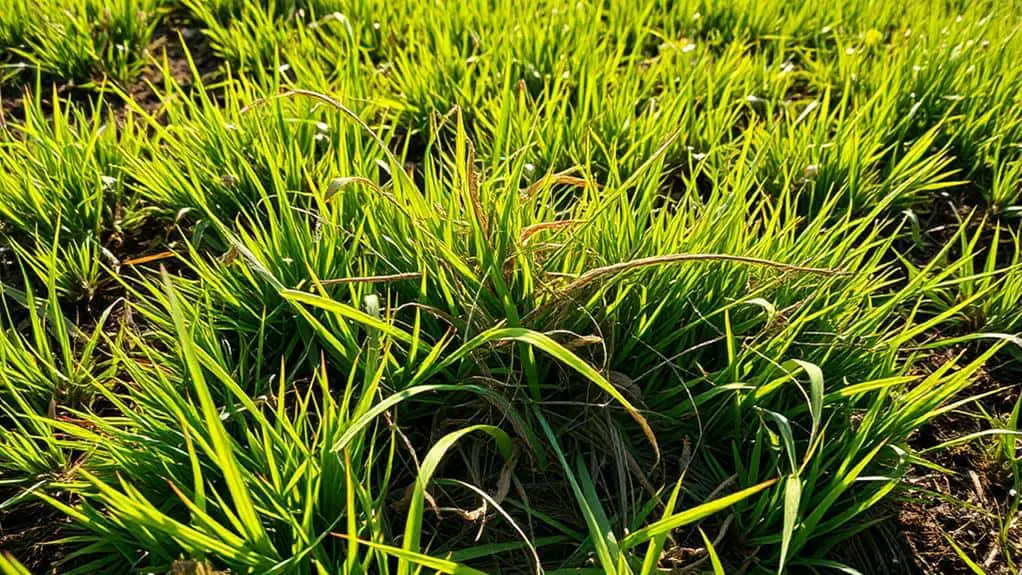
Endurance becomes a challenge for rough bluegrass, scientifically known as Poa trivialis, when summer temperatures soar. This cool-season grass really struggles in the summer, often leading to browning and dormancy.
Rough bluegrass prefers cooler climates and is best suited for northern regions, making it unsuitable for hot areas where it can't thrive.
In warm weather, rough bluegrass tends to develop shallow root systems, making it more vulnerable to heat stress and drought. Additionally, it can become prone to diseases during summer, especially in hot and humid environments.
This further degrades its health. So, if you live in a warmer climate, it's best to avoid planting rough bluegrass to keep your lawn healthy and resilient.
Velvet Bentgrass Challenges
When it comes to Velvet Bentgrass, summer isn't its best friend.
This cool-season grass doesn't handle heat well, often turning brown or going dormant as temperatures rise. Its need for constant moisture and its poor drought tolerance make it high maintenance and unsuitable for hot climates.
Heat Sensitivity Issues
Despite its lush appearance, Velvet Bentgrass faces significant heat sensitivity issues that make it a poor choice for summer lawns. This cool season grass struggles when temperatures exceed 85°F, often leading to browning and dormancy.
If you're considering Velvet Bentgrass, be aware of these challenges:
- Heat stress: High temperatures can easily cause browning and dormancy.
- Drought susceptibility: Shallow roots make it vulnerable to dry conditions.
- Disease-prone: Warm, humid weather increases the risk of fungal issues like dollar spot and brown patch.
- Water demands: Maintaining its appearance requires excessive watering.
Understanding these heat sensitivity issues can help you choose a grass better suited for summer. Velvet Bentgrass thrives in cooler climates, so it's best avoided in regions with high summer heat.
High Maintenance Needs
Velvet Bentgrass is notorious for its high maintenance needs, especially during the summer months. This grass demands meticulous care, requiring frequent watering, regular mowing, and precise fertilization.
Summer heat stress makes these tasks even more essential, as velvet bentgrass quickly turns brown if not properly maintained. This can result in a patchy lawn that might need reseeding.
Additionally, this grass thrives in cooler climates, struggling to survive intense summer heat. High humidity and heat can also lead to issues like dollar spot and brown patch diseases.
Maintaining velvet bentgrass means committing to lower mowing heights, which increases labor and resource use during hot months. It's a tough grass to keep looking good in summer!
Poor Drought Tolerance
Keeping velvet bentgrass looking lush and green during the summer isn't just about meticulous maintenance—it's also about dealing with its poor drought tolerance.
This grass type often struggles in hot climates where water can be scarce, leading to browning and patchiness in your lawn. Velvet Bentgrass has a shallow root system, so it can't reach deep moisture, making it more prone to heat stress.
Here are some challenges:
- Frequent watering needed: More water consumption increases maintenance costs.
- Susceptibility to dry spells: Browning and patchiness can occur.
- High summer temperatures: Often fails to thrive, leading to lawn care challenges.
- Potential turf replacement: In extreme cases, you might need to replace sections of your lawn.
Choosing a more drought-tolerant grass type can save you time and effort.
Red Fescue Failures

Why does red fescue often fail in the summer?
Well, red fescue is a cool-season grass, meaning it struggles when temperatures rise above 80°F. When summer hits, you'll notice its summer performance drops considerably. It often turns brown or goes dormant because it can't handle the heat.
This grass also demands consistent moisture, which isn't ideal if you live in a region with hot, dry summers. Since red fescue has shallow roots, it lacks the drought resistance that warm-season grasses have.
It's also more prone to weed invasion in hot climates, making it hard to maintain a lush, green lawn. So, if you want a vibrant yard in the summer, red fescue mightn't be your best bet.
Colonial Bentgrass Setbacks
Colonial bentgrass, another cool-season grass, often faces setbacks during the summer months. This grass struggles when temperatures rise, and you'll likely notice browning and dormancy.
Here are some key reasons why colonial bentgrass isn't ideal for summer:
- Heat Stress: Colonial bentgrass can't handle high temperatures and tends to brown out.
- Water Needs: It requires a lot of watering to look good, which isn't practical in hot climates.
- Disease and Pests: Summer heat brings out diseases and pests that love to attack this grass.
- Shallow Roots: Its roots don't go deep, making it prone to drought and patchy lawns.
Frequently Asked Questions
What Grass Goes Dormant in the Summer?
Cool-season grasses like Kentucky bluegrass, fescues, and ryegrass go dormant in the summer. For summer care, keep watering them and limit foot traffic to help them recover and green up when cooler temperatures return.
What Is the Best Grass for Hot Summers?
For hot summers, I'd recommend heat tolerant varieties like Bermudagrass or drought resistant options such as Buffalo grass. These grasses thrive in high temperatures and require minimal watering, making them perfect for maintaining a lush lawn in harsh climates.
Is It OK to Grow Grass in the Summer?
Sure, you can grow grass in the summer if you focus on summer grass care and choose heat-resistant varieties like zoysia or Bermudagrass. These types thrive in high temperatures and need less water once established.
Does Grass Stop Growing in Hot Weather?
Grass growth does slow in hot weather, especially for cool-season types. Grass growth factors like soil moisture and sunlight impact this. Summer watering tips: water deeply and less frequently to promote deeper roots and healthier lawns.
Conclusion
So, when planning your summer lawn, steer clear of cool-season grasses like Kentucky Bluegrass and Perennial Ryegrass. They just can't handle the heat and need too much water. Instead, go for warm-season varieties that thrive in the sun. This choice will save you time, effort, and keep your lawn looking green and healthy. You've got this! With a little planning, your garden can handle whatever summer throws its way. Happy gardening!

